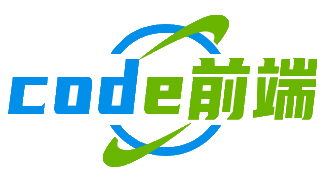Vue3 怎么做好用的图片预览组件?从需求到落地全拆解
做项目时碰到图片预览需求,直接找现成组件还是自己撸一个?Vue3 环境下怎么做出体验好、性能优的图片预览组件?这篇从需求分析到代码落地,拆清楚每个环节该咋做。
为什么项目里需要独立的图片预览组件?
先想场景:电商详情页点商品图要看细节、社交 App 刷到图片墙想左右滑、后台系统看报表截图要放大……这些场景里,“点击放大 + 切换 + 手势操作”是通用需求,要是每个页面都重复写逻辑,不仅代码冗余,后期改交互得挨个改,维护成本爆炸。
从用户体验说,流畅的预览能让用户愿意多停留,比如电商里图片加载快、切换丝滑,用户更愿意看商品细节,转化率可能悄悄涨,从技术层面看,Vue3 的 Composition API 天生适合逻辑复用,响应式系统也更高效,把预览功能封装成组件,能在多个页面直接复用,开发效率翻倍。
Vue3 构建图片预览组件的核心思路是什么?
得从“结构 + 逻辑 + 交互”三层拆解:
结构分层
- 蒙层(遮罩层):控制组件显隐,点击蒙层空白处能关闭预览,还要用
Teleport挂载到body上,避免被父组件样式(overflow: hidden)坑到。 - 图片容器:装当前显示的图片,还要处理加载、错误状态,同时承载缩放、平移的交互。
- 导航控件:左右切换按钮、关闭按钮,甚至全屏按钮、旋转按钮(复杂场景),这些控件要方便用户快速操作。
逻辑分层
- 数据通信:用
defineProps接收图片列表、当前索引、是否显示等参数;用defineEmits触发关闭、切换索引等事件,保持组件独立性。 - 状态管理:用
ref存加载状态(loading)、错误状态(error)、缩放比例(scale)等;用computed处理当前显示的图片地址,避免重复计算。 - 生命周期:组件挂载时加键盘事件监听,卸载时销毁事件,防止内存泄漏;图片显示时预加载资源,切换时重置状态。
功能模块该怎么拆分才合理?
把大功能拆成小模块,每个模块聚焦单一职责,后期维护和扩展更轻松:
基础显示模块:处理加载与错误状态
用户点图片后,得让他知道“图片在加载”还是“加载失败”,可以给 img 标签绑 @load 和 @error 事件:
- 加载中:显示 spinner 动画(用 CSS 或者 SVG),告诉用户“别着急,在加载”。
- 加载失败:显示占位图(比如带感叹号的图标),还能提供“重新加载”按钮(复杂场景可选)。
代码逻辑示例:
<img v-if="!loading && !error" :src="currentImg" @load="loading = false" @error="error = true" > <div v-if="loading">加载中...</div> <div v-if="error">图片挂了,点这重试?</div>
导航交互模块:支持点击与键盘操作
- 按钮切换:左右按钮控制图片索引,支持循环切换(比如第一张点上一张跳到最后一张)。
- 键盘导航:用户按左右箭头切换、
Esc键关闭,符合 PC 端操作习惯,记得在组件挂载时加事件监听,卸载时销毁:onMounted(() => { document.addEventListener('keydown', handleKeydown) }) onUnmounted(() => { document.removeEventListener('keydown', handleKeydown) }) const handleKeydown = (e) => { if (e.key === 'ArrowLeft') 切换上一张 if (e.key === 'ArrowRight') 切换下一张 if (e.key === 'Escape') 关闭预览 }
缩放平移模块:兼顾移动端与 PC 端
移动端用户习惯双指缩放、单指平移;PC 端用滚轮缩放,直接自己写手势逻辑太麻烦?可以用 VueUse 的 usePinch(双指缩放)、useMouseWheel(滚轮)简化开发:
import { usePinch, useMouseWheel } from '@vueuse/core'
const el = ref(null) // 图片容器的DOM引用
usePinch(el, (state) => {
scale.value *= state.scaleDelta // 实时计算缩放比例
})
useMouseWheel(el, (e) => {
scale.value += e.deltaY * 0.01 // 滚轮滚动控制缩放
})
还要处理边界:缩放后平移不能让图片“跑”出可视区域,比如限制 translateX 不能超过图片宽度的一半,避免用户把图片拖到看不见。
蒙层与层级管理:用 Teleport 避坑
如果父组件有 overflow: hidden 或者 transform 样式,预览组件可能被截断,用 Teleport 把组件挂载到 body 最外层,再设置高 z-index,确保蒙层在所有内容之上:
<teleport to="body"> <div class="preview-mask" v-if="isShow">...</div> </teleport>
交互细节怎么优化让用户觉得“丝滑”?
细节决定体验,这些小优化能让组件更像“大厂出品”:
切换动画:用 Transition 让切换更自然
图片切换时加渐变或滑动动画,用户感知更流畅,Vue 的 Transition 组件能轻松实现:
<transition name="fade">
<img :src="currentImg" v-if="!loading && !error" />
</transition>
<style>
.fade-enter-active, .fade-leave-active {
transition: opacity 0.3s;
}
.fade-enter-from, .fade-leave-to {
opacity: 0;
}
</style>
预加载:切换时不等待
用户点“下一张”前,提前加载下一张图片,用 Image 对象预加载:
// 切换索引时,预加载下一张和上一张
const preloadImages = (index) => {
const nextIndex = (index + 1) % props.images.length
const prevIndex = (index - 1 + props.images.length) % props.images.length
new Image().src = props.images[nextIndex].url
new Image().src = props.images[prevIndex].url
}
手势响应:跟手又流畅
移动端双指缩放时,用 requestAnimationFrame 优化性能,避免卡顿:
let lastScale = 1
usePinch(el, (state) => {
requestAnimationFrame(() => {
scale.value = lastScale * state.scaleDelta
})
state.pinchEnded(() => {
lastScale = scale.value
})
})
自适应布局:不同设备不同体验
PC 端图片默认 1:1 显示,移动端根据屏幕宽度自动适配,用 CSS 媒体查询或者 JS 计算:
const defaultScale = ref(1)
onMounted(() => {
if (isMobile()) { // 自己实现isMobile判断,比如检测UA或视口宽度
defaultScale.value = window.innerWidth / 375 // 假设设计稿375宽度
}
})
性能优化要避开哪些“坑”?
功能做出来了,性能拉胯用户也不爱用,这些点要重点关注:
减少不必要的响应式依赖
缩放、平移这些变量,如果用 ref 会触发整个组件重新渲染,可以用 shallowRef 或者手动控制响应式:
const transformState = shallowRef({ scale: 1, x: 0, y: 0 })
// 操作时直接改属性,不触发深层响应式
transformState.value.scale = 2
事件及时销毁
组件里加的 addEventListener(比如键盘、手势),一定要在 onUnmounted 里移除,否则组件销毁后事件还在,容易内存泄漏:
onMounted(() => {
document.addEventListener('keydown', handleKeydown)
})
onUnmounted(() => {
document.removeEventListener('keydown', handleKeydown)
})
CSS 硬件加速
给图片容器加 transform: translateZ(0) 或者 will-change: transform,让浏览器用 GPU 加速渲染,缩放平移更流畅:
.preview-container {
will-change: transform;
}
图片资源懒加载(可选)
如果图片列表很长,预览时只加载当前和相邻图片,其他图片等需要时再加载,结合 IntersectionObserver 实现懒加载,减少初始加载压力。
实战:从0到1写个基础版图片预览组件
光说不练假把式,这里写个能跑的基础版,覆盖核心功能:
组件结构(Preview.vue)
<template>
<teleport to="body">
<div
v-if="isShow"
class="preview-mask"
@click.self="handleClose"
>
<div class="preview-container" ref="container">
<!-- 图片加载状态 -->
<img
v-if="!loading && !error"
:src="currentImg"
:style="imgStyle"
@load="loading = false"
@error="error = true"
>
<div v-if="loading" class="loading">加载中...</div>
<div v-if="error" class="error">图片加载失败</div>
<!-- 导航按钮 -->
<button class="btn prev" @click="handlePrev">‹</button>
<button class="btn next" @click="handleNext">›</button>
<button class="btn close" @click="handleClose">×</button>
</div>
</div>
</teleport>
</template>
逻辑部分(Composition API)
<script setup>
import { ref, computed, watch, onMounted, onUnmounted } from 'vue'
// 接收父组件参数
const props = defineProps({
images: { type: Array, required: true }, // 图片列表,格式:[{ url: 'xxx' }, ...]
visible: { type: Boolean, required: true }, // 是否显示预览
currentIndex: { type: Number, default: 0 }
})
const emit = defineEmits(['close', 'changeIndex']) // 触发关闭、切换索引
const isShow = ref(props.visible)
const loading = ref(false)
const error = ref(false)
const container = ref(null) // 容器DOM引用
// 当前显示的图片地址
const currentImg = computed(() => props.images[props.currentIndex]?.url)
// 缩放、平移状态
const scale = ref(1)
const translateX = ref(0)
const translateY = ref(0)
const imgStyle = computed(() => ({
transform: `scale(${scale.value}) translate(${translateX.value}px, ${translateY.value}px)`,
transition: 'transform 0.3s ease'
}))
// 监听visible变化,控制组件显隐
watch(() => props.visible, (val) => {
isShow.value = val
if (val) {
loading.value = true
error.value = false
// 预加载当前图片
const img = new Image()
img.src = currentImg.value
img.onload = () => (loading.value = false)
img.onerror = () => (error.value = true)
} else {
// 隐藏时重置状态
scale.value = 1
translateX.value = 0
translateY.value = 0
}
})
// 切换上一张
const handlePrev = () => {
let index = props.currentIndex - 1
if (index < 0) index = props.images.length - 1
emit('changeIndex', index)
}
// 切换下一张
const handleNext = () => {
let index = props.currentIndex + 1
if (index >= props.images.length) index = 0
emit('changeIndex', index)
}
// 关闭预览
const handleClose = () => {
emit('close')
}
// 键盘事件(PC端)
onMounted(() => {
document.addEventListener('keydown', handleKeydown)
})
onUnmounted(() => {
document.removeEventListener('keydown', handleKeydown)
})
const handleKeydown = (e) => {
if (isShow.value) {
if (e.key === 'ArrowLeft') handlePrev()
if (e.key === 'ArrowRight') handleNext()
if (e.key === 'Escape') handleClose()
}
}
</script>
样式(SCSS)
.preview-mask {
position: fixed;
top: 0;
left: 0;
width: 100vw;
height: 100vh;
background: rgba(0, 0, 0, 0.8);
display: flex;
justify-content: center;
align-items: center;
z-index: 9999;
cursor: zoom-out;
.preview-container {
position: relative;
max-width: 90%;
max-height: 90%;
cursor: zoom-in;
img {
max-width: 100%;
max-height: 100%;
object-fit: contain;
}
.loading, .error {
color: #fff;
text-align: center;
padding: 20px;
}
.btn {
position: absolute;
top: 10px;
padding: 6px 12px;
background: rgba(255, 255, 255, 0.2);
color: #fff;
border: none;
border-radius: 4px;
cursor: pointer;
transition: background 0.2s;
&:hover {
background: rgba(255, 255, 255, 0.4);
}
}
.prev {
left: 10px;
}
.next {
left: 50px;
}
.close {
right: 10px;
}
}
}
父组件使用示例
<template>
<div class="gallery">
<img
v-for="(img, idx) in images"
:key="idx"
:src="img.url"
@click="openPreview(idx)"
>
<Preview
:images="images"
:visible="isPreviewShow"
:current-index="previewIndex"
@close="isPreviewShow = false"
@changeIndex="previewIndex = $event"
/>
</div>
</template>
<script setup>
import { ref } from 'vue'
import Preview from './Preview.vue'
const images = ref([
{ url: 'https://example.com/img1.jpg' },
{ url: 'https://example.com/img2.jpg' },
{ url: 'https://example.com/img3.jpg' }
])
const isPreviewShow = ref(false)
const previewIndex = ref(0)
const openPreview = (idx) => {
previewIndex.value = idx
isPreviewShow.value = true
}
</script>
这个基础版实现了显示/隐藏控制、加载状态、切换导航、键盘操作,能直接在项目里用,如果要扩展缩放、平移,结合 VueUse 的手势工具就能快速实现。
社区方案能借鉴什么?自己造轮子要注意啥?
现在社区有不少成熟的图片预览库,vue3-image-preview、viewerjs 的 Vue3 封装版,它们的优势值得借鉴:
- 交互完整性:
viewerjs支持缩略图栏、全屏、旋转、标注等复杂功能,还做了 accessibility 优化(键盘导航、屏幕阅读器支持)。 - 性能优化:成熟库会处理图片预加载、内存泄漏、硬件加速等细节,不用自己踩坑。
但业务场景千差万别,比如做“图片 + 文字说明”的预览、带编辑功能的预览,现成库可能不够灵活,这时候自己造轮子要注意:
- 明确需求边界:如果只是“点击放大 + 切换”,自己写轻量组件更省体积;如果需要复杂编辑,基于现有库二次开发更高效。
- 预留扩展性:用插槽(Slot)让用户自定义导航按钮、加载状态;暴露
ref让父组件能调用内部方法(比如强制刷新图片)。 - 可访问性(Accessibility):给按钮加
aria-label
版权声明
本文仅代表作者观点,不代表Code前端网立场。
本文系作者Code前端网发表,如需转载,请注明页面地址。
 code前端网
code前端网



